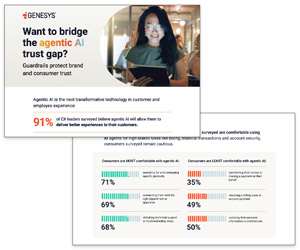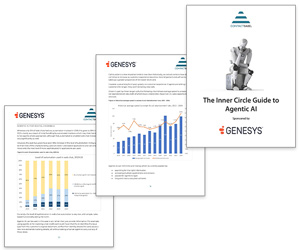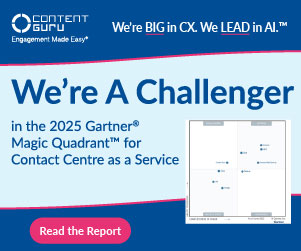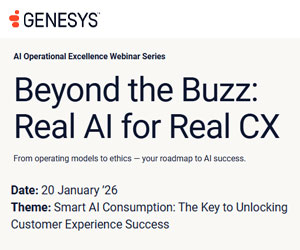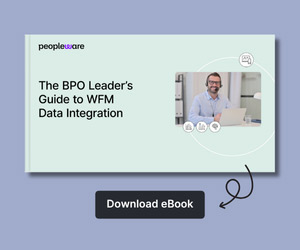Jon Capetz at Genesys explores how to build a compelling business case for AI modelling ROI, and securing stakeholder buy-in for lasting customer experience transformation.
Building a compelling business case for artificial intelligence (AI) is part strategy, part storytelling and part structured financial modeling. While technical teams may focus on what AI can do, business leaders must focus on why it matters – and to whom.
Being able to translate AI’s potential into real-world, quantifiable outcomes could be a critical component in getting your project approved.
The most effective AI business cases frame the investment not just in terms of innovation, but also in terms of risk, efficiency, growth and long-term value.
That starts with a grounded understanding of the business problem that the technology will solve. Here are the steps to build a solid business case for AI.
1. Define the Business Problem
Before discussing technology as a team, clearly define the business pain point. AI solutions are most credible when they’re rooted in problems that have financial weight and organisational urgency.
- Identify a challenge with measurable consequences: Look for areas where inefficiencies, manual work or customer experience gaps are dragging down performance. This could include poor forecast accuracy, high churn, long cycle times or agent inefficiency.
- Quantify the cost of doing nothing: Help stakeholders understand the financial impact of doing nothing. Use real data to calculate the lost revenue, excess costs or missed opportunity tied to the problem.
Here’s an example: “Our company’s existing manual approach to demand forecasting results in inaccurate projections that lead to $4 million in excess inventory and $1.5 million in lost sales annually.
By automating this function with AI, we estimate improved management of our supply chain, therefore better sales conversion.”
Clear, specific framing builds urgency, and sets the stage for meaningful ROI calculations.
2. Align to Your Strategic Goals
Aligning the initiative with your organisation’s broader strategic goals shifts the conversation from “interesting technology” to “critical investment.
To do this effectively, frame the AI solution as a direct enabler of goals that already exist, such as improving customer experience, driving revenue growth or increasing operational efficiency.
Speak in terms that resonate with executive priorities, referencing language from the company’s strategic plan, if possible. The more closely your proposal reflects leadership’s stated objectives, the more credible and relevant it becomes.
Next, paint a picture of what success looks like. Describe the impact the AI solution will have on the business, what it improves, streamlines or unlocks. Then clearly outline the business outcomes you expect, focusing on measurable impact from several perspectives:
- Financial: Lower support costs, higher conversion rates or increased revenue
- Operational: Fewer manual tasks, faster response times improved accuracy
- Experiential: Higher customer satisfaction, greater employee engagement, less churn
Here’s an example: “By implementing AI copilots, we’ll reduce call time by 10%, which equates to an estimated $1 million in annual savings, while delivering a more consistent experience across all channels.”
Select the business benefits that best apply to your conditions and that you can prioritise.
3. Match AI Solutions to Specific Needs
Mapping AI capabilities to your specific needs, and your level of customer experience (CX) maturity, is key to demonstrating value and proving ROI for any organisation’s starting point.
To manage this, Genesys identifies six Levels of Experience Orchestration, each representing a different stage in a company’s ability to deliver intelligent, personalised, connected customer journeys.
These levels provide a framework for matching the type of AI investment to the outcomes your business is ready to pursue, while balancing tradeoffs between operational efficiency and delivering people-centric experiences.
Focus areas might include automation to reduce manual effort, AI-driven augmentation to assist employees with faster responses, personalisation or optimisation to drive more proactive engagement.
By matching AI to the right level of readiness, you avoid overbuilding and instead create a roadmap based on ROI and impact, where value compounds as capabilities grow.
Analyse current costs, investments and business benefits: Analysing your current cost structure and comparing it to a potential AI-powered model helps surface not only cost savings but also investment readiness.
Start by conducting a total cost evaluation. This includes implementation fees, ongoing expenses and the internal resources needed to support your current systems.
When possible, compare this baseline to the more efficient model that’s enabled by AI. This analysis should reveal a clear estimate of potential hard savings.
Next, assess the AI investment itself. What is the cost of the proposed solution? What current tools or manual processes will it replace? And where does it reduce or eliminate redundant spend?
Finally, evaluate the business benefits through measurable financial metrics. Focus on:
- Net Present Value (NPV) to understand long-term gain
- Payback period to determine how soon you’ll recoup your investment
- Sensitivity analysis to model best- and worst-case scenarios
This structured approach gives stakeholders the financial clarity and confidence needed to make data-driven decisions about AI investments.
4. Design for Future Integration Needs
When evaluating AI solutions, it’s important to look beyond immediate functionality and consider how the technology will integrate within your broader ecosystem.
Choose solutions that work seamlessly with your existing CRM, ERP and workforce tools to avoid costly disruption.
Look for platforms built with an open API architecture, these are more adaptable and easier to scale as business needs evolve. Also, ensure the AI can extend across multiple channels, including voice, chat and social.
Finally, review the provider’s strategic partnerships to ensure long-term alignment and support. Future-ready integration is key to sustaining value.
Once you’ve followed these four steps to prove your AI need, you can move onto project buy-in and clearly plan out implementation steps.
Create an Implementation Roadmap with a Realistic Timeline
A successful AI deployment starts with a clear, actionable roadmap. Begin by identifying your priorities — what needs to be implemented first and why?
Consider any dependencies within the AI solution that could affect the timing of business benefits. From there, break the project into phases with defined milestones. Be sure to account for activities that may require longer lead times, such as integration efforts or user training.
It’s also important to anticipate potential risks. Data quality, change resistance and user adoption can all delay value realisation if not addressed early.
Equally critical is ensuring you have the right people involved. Often, the biggest challenge isn’t the technology, it’s resource availability.
Key subject matter experts are frequently pulled between transformation efforts and their day-to-day responsibilities. A well-scoped roadmap not only outlines the work ahead but ensures that the right support is in place to see it through.
Gather stakeholder input: AI initiatives succeed when the right voices are at the table from the start. Engage contact centre managers, IT teams and customer experience leaders early in the process to align priorities and uncover their needs. Understand how decisions are made, and which criteria matter most.
Just as importantly, listen to agent feedback. Their frontline insights often reveal opportunities that data alone can’t. Businesses that succeed with AI don’t just chase features — they focus on delivering measurable, customer-cantered improvements.
This blog post has been re-published by kind permission of Genesys – View the Original Article
For more information about Genesys - visit the Genesys Website
Call Centre Helper is not responsible for the content of these guest blog posts. The opinions expressed in this article are those of the author, and do not necessarily reflect those of Call Centre Helper.
Author: Genesys
Reviewed by: Jo Robinson
Published On: 5th Sep 2025
Read more about - Guest Blogs, Genesys






 Genesys empowers more than 8,000 organisations in over 100 countries to improve loyalty and business outcomes by creating the best experiences for their customers and employees. Through Genesys Cloud, the AI-Powered Experience Orchestration platform, Genesys delivers the future of CX to organisations of all sizes so they can provide empathetic, personalised experience at scale. As the trusted platform that is born in the cloud, Genesys Cloud helps organisations accelerate growth by enabling them to differentiate with the right customer experience at the right time, while driving stronger workforce engagement, efficiency and operational improvements.
Genesys empowers more than 8,000 organisations in over 100 countries to improve loyalty and business outcomes by creating the best experiences for their customers and employees. Through Genesys Cloud, the AI-Powered Experience Orchestration platform, Genesys delivers the future of CX to organisations of all sizes so they can provide empathetic, personalised experience at scale. As the trusted platform that is born in the cloud, Genesys Cloud helps organisations accelerate growth by enabling them to differentiate with the right customer experience at the right time, while driving stronger workforce engagement, efficiency and operational improvements. 




